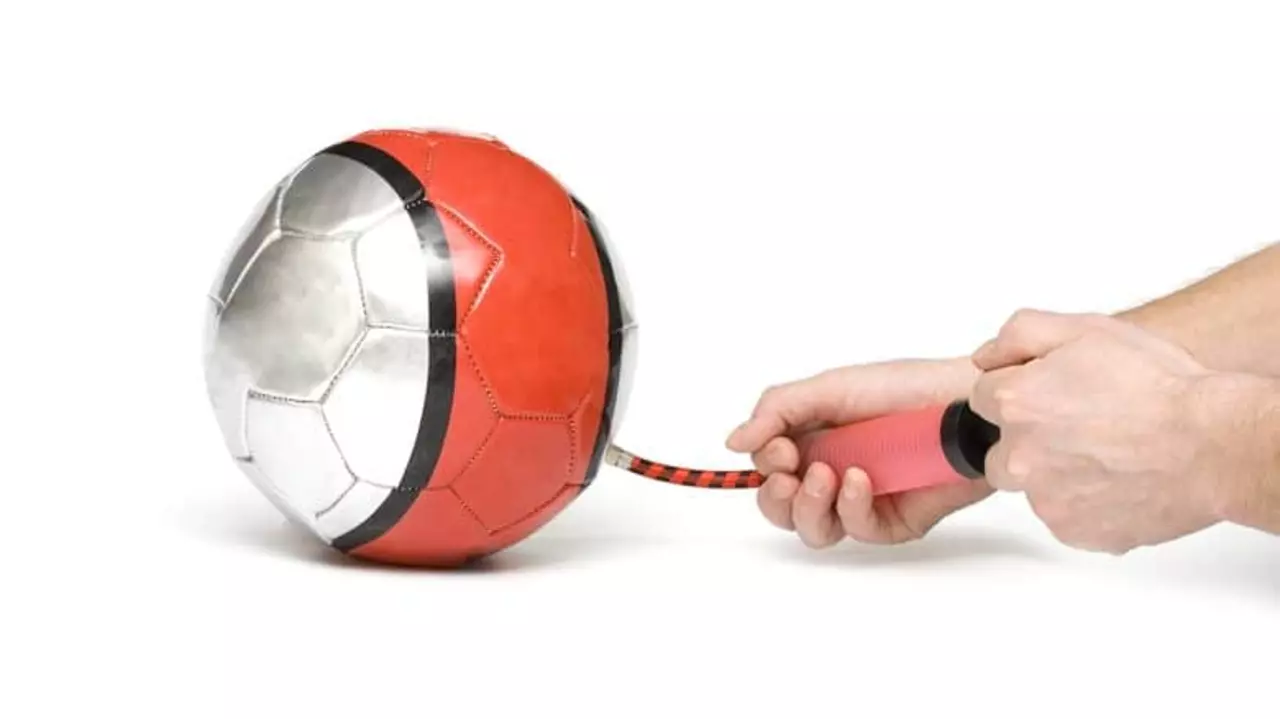Step-by-Step Guide to Deflating a Soccer Ball
Soccer balls are usually inflated to a pressure of 8.5 to 15.6 pounds per square inch (PSI). The exact pressure needed is determined by the age of the player, the size of the ball, and the type of play. Deflating a soccer ball is easy to do with the right tools and a few simple steps.
Step 1: Get the Necessary Tools
The first thing you need to do is get the necessary tools. You’ll need a ball pump, a pressure gauge, and a needle. The ball pump is used to pump air out of the ball, the pressure gauge is used to measure the air pressure in the ball, and the needle is used to puncture and deflate the ball.
Step 2: Measure the Pressure
Once you have all the necessary tools, you’ll need to measure the pressure of the ball. To do this, use the pressure gauge to measure the air pressure in the ball. This will tell you how much air is in the ball and how much pressure it needs to be deflated.
Step 3: Deflate the Ball
Now that you know the pressure of the ball, you can start to deflate it. Insert the needle into the ball and let the air out slowly. Make sure to do this gradually, as deflating the ball too quickly can damage it. Once the ball is deflated to the desired pressure, remove the needle.
Step 4: Re-inflate the Ball
Once the ball is deflated, it’s time to re-inflate it. Use the ball pump to slowly fill the ball with air until it reaches the desired pressure. Once the ball is re-inflated, you’re done!
Conclusion
Deflating a soccer ball is easy to do with the right tools and a few simple steps. With the right ball pump, pressure gauge, and needle, you can quickly and easily deflate and re-inflate your soccer ball to the desired pressure. Just follow the steps outlined above, and you’ll be ready to play in no time!
The Benefits of Deflating a Soccer Ball for Improved Performance
Deflating a soccer ball can be beneficial for both players and coaches in order to improve the performance of a team or individual. Deflating a ball can help maximize shooting power and accuracy, help with ball control and dribbling, and make it easier to strike the ball.
Maximizing Shooting Power and Accuracy
Deflating a soccer ball can help players increase their shooting power and accuracy. The ball will have less bounce, making it easier to control and shoot with accuracy. A softer ball also makes it easier to curl the ball around defenders and goalkeepers, and will be less affected by the wind.
Improving Ball Control and Dribbling
Deflating a soccer ball can also help players improve their ball control and dribbling skills. The softer ball will be easier for players to control when dribbling, making it easier to run with the ball and avoid defenders. The softer surface also gives players more control when passing the ball.
Making It Easier to Strike the Ball
Deflating a ball can also make it easier for players to strike the ball. The softer surface will absorb some of the impact of the strike, making it easier to hit the ball with accuracy. This can help players with their accuracy and power when taking shots, as well as when passing and crossing the ball.
In conclusion, deflating a soccer ball can be beneficial for both players and coaches in order to improve the performance of a team or individual. Deflating a ball can help maximize shooting power and accuracy, help with ball control and dribbling, and make it easier to strike the ball. This can give players a significant advantage on the pitch, and help them reach their full potential.
Tips for Properly Deflating a Soccer Ball for Storage
Deflating a soccer ball is an important step for proper storage and maintenance. Most people think that deflating a soccer ball is as simple as squeezing out all the air, but there is more to it than that. This article will explain the proper way to deflate a soccer ball, so that it remains in perfect condition for storage.
Preparation
The first step in properly deflating a soccer ball is to make sure that you have the right tools. You will need a ball pump with a deflation needle, which can be purchased at most sporting goods stores. Make sure that the ball pump is in good condition and that the deflation needle is clean and free of any dirt or debris.
Deflating the Soccer Ball
Once you have the right tools, it’s time to begin deflating the soccer ball. Start by using the ball pump to remove the valve cover from the ball. Then, insert the deflation needle into the valve and slowly begin to deflate the ball. Make sure to keep the deflation needle inserted for several seconds, as this will help to ensure that all the air is removed from the ball. Once the ball is completely deflated, remove the deflation needle and replace the valve cover.
Proper Storage
Now that the soccer ball is properly deflated, it’s time to store it. Make sure to store the ball in a cool, dry place, such as a closet or storage bin. Additionally, make sure to keep the ball away from direct sunlight and any harsh chemicals, as these can damage the ball over time. If possible, try to store the ball in a breathable bag or container, as this will help to keep the ball clean and dry.
Conclusion
Deflating a soccer ball is an important step to ensure that the ball remains in perfect condition for storage. Make sure to use the right tools and follow the steps outlined above to properly deflate your soccer ball. With proper storage and maintenance, your soccer ball will remain in great condition for years to come.

Write a comment